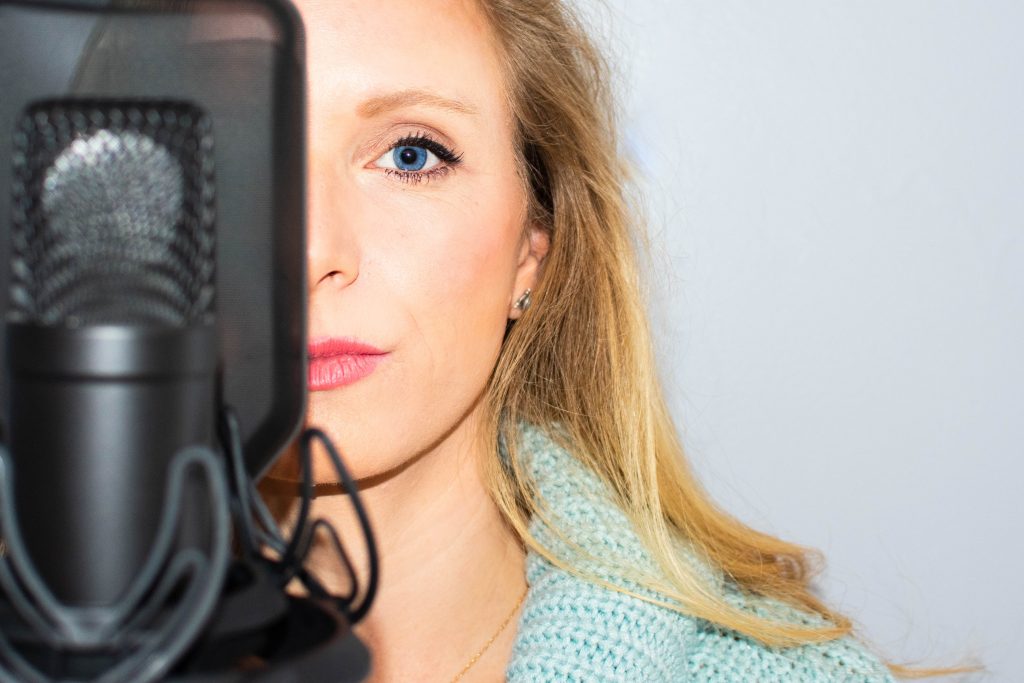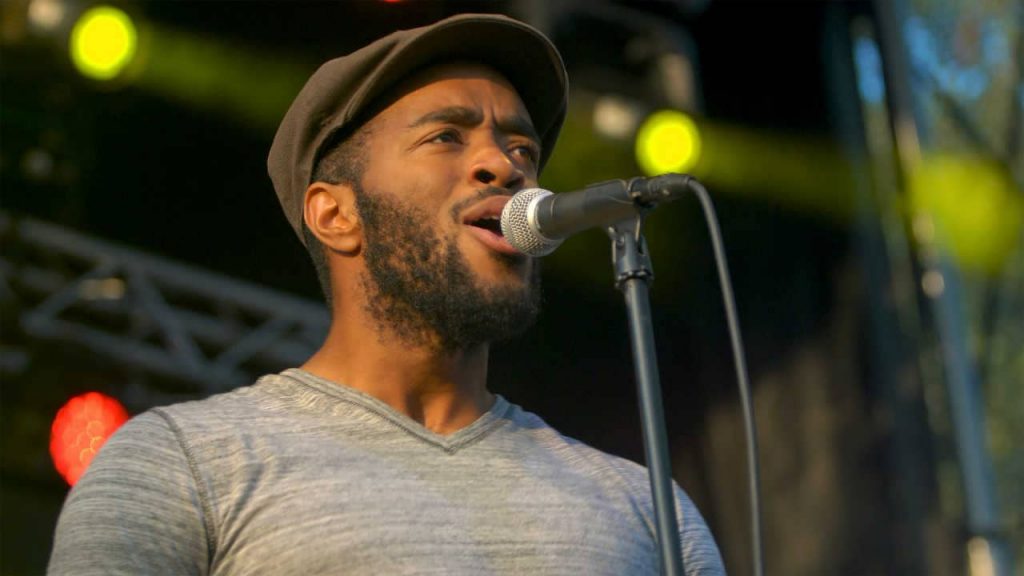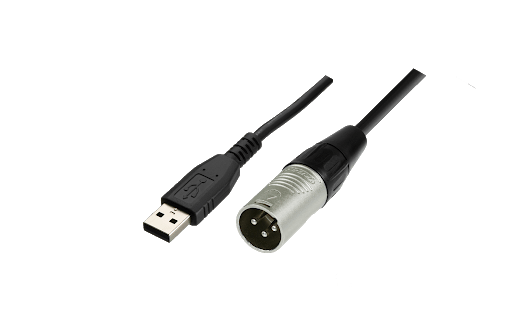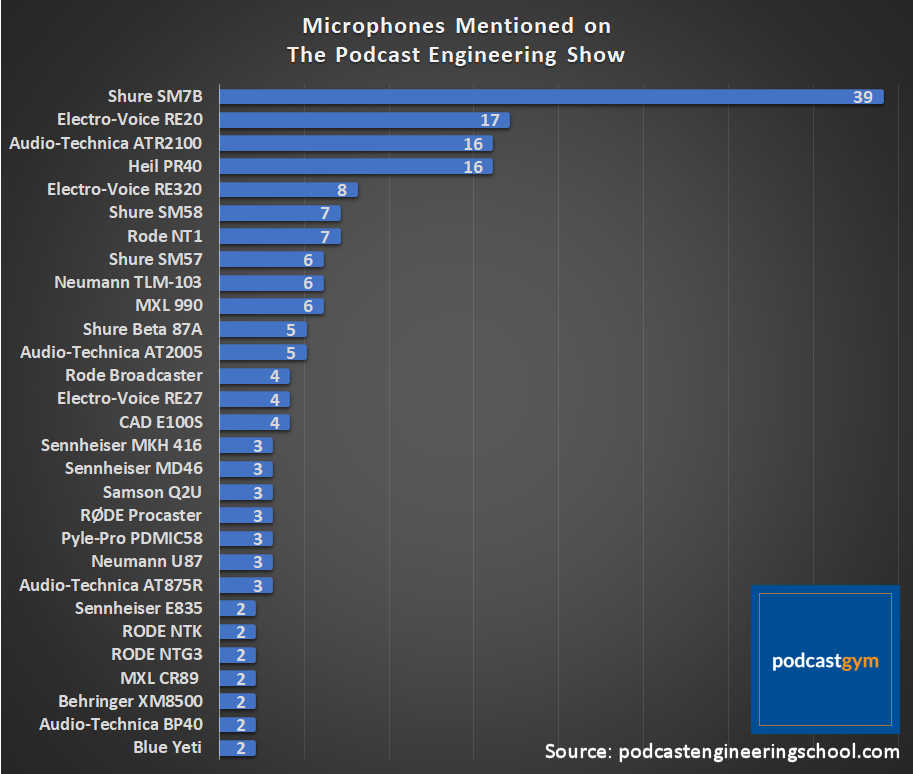A great microphone is an important tool of the trade so choose yours wisely. Type “Best podcast microphone” into Google, YouTube, or Pinterest, and you’re likely to find the Blue Yeti atop many lists. Before impulsively adding it to your shopping cart though, you should learn about the different types of microphones and how they differ. Do your homework, because you should pick the microphone that is best for your voice and your room.
Condenser vs Dynamic
As a podcaster, you don’t have to be a professional sound engineer, but you should know the differences between a condenser mic and a dynamic mic.

When you see a singer in a recording studio, odds are good that she’s singing into a condenser microphone. Your first clue: you’ll notice that it’s a side-address microphone. In the photo above, the podcaster is correctly speaking or singing into the side of the mic — not into the top. If you take a closer look inside the head basket, you can see a diaphragm or membrane inside. Because condenser mics tend to be sensitive, they’re better suited in a sound-treated studio that doesn’t have a lot of room noise or echo.
Characteristics of studio condenser mics:
- Greater frequency response
- Sensitive to louder sounds
- Requires phantom power, a.k.a. 48V
- Cleaner and truer to reality
- Best in a sound controlled environment
- More costly

When you see musicians on stage, you’re likely to find dynamic microphones being used. These mics are better when there are several musicians, for example, when you’ve got vocals and instruments (guitar, bass guitar, drums.) As pictured above, the singer is correctly singing into the top of the microphone. With a dynamic microphone, sound waves hit a thin metallic diaphragm that is attached to a coil of wire. A magnetic field is part of the energy conversion. In podcasting and radio, dynamic microphones can be ideal because of durability and price. When your mouth is close to the microphone, dynamic mics sound good for spoken word while picking up less room sound.
Characteristics of dynamic mics:
- Durable
- Do not require power
- Good in noisy environments
- Less sensitive
- Lack depth and color
- More affordable
Now that you know the differences between condenser and dynamic microphones, evaluate your space to see which type might serve you best. I encourage you to try both, if you can, to see which type sounds best for your voice and recording environment. In lieu of sound treating a room, many podcasters improve their audio quality by recording in a closet full of clothes or underneath a blanket with both types of microphones but especially to tame sensitive condenser microphones.
XLR vs USB

As you shop for a microphone, take note of the connections. Generally, XLR connections require an external interface to connect the microphone to your computer. External interfaces often have better preamps and analog to digital converters.
USB microphones can plug directly into your computer resulting in a more straight forward setup with less expense (because you don’t need to buy an interface.) Microphones like the Audio-Technica ATR-2100 and Samson Q2U have both XLR and USB connections. Interestingly, I’m told that these combo microphones actually sound better when plugged in via USB over XLR. It’s worth noting that quite a few very popular podcasts use budget mics like the ATR-2100 or Q2U, and they sound great.
Mics the Experts Use

Because audio is so subjective, selecting the best podcast microphone can be challenging. Rather than going by the advice of random Bloggers and YouTubers, I scanned 196 episodes of The Podcast Engineering Show and ranked the top 29 microphones by mentions by guests. In full disclosure, I had the pleasure of being a guest on PES episode 106 and talked all about my podcasting rig.
Host Chris Curran produces or has produced podcasts for Forbes, Dun & Bradstreet, Johnson & Johnson, as well as for many other companies and business authors. He has many album credits including engineer, producer, or assistant engineer on projects with Foreigner, Sarah McLachlan, Itzhak Perlman, Naughty by Nature, Ice Cube, Biggie Smalls, Puffy, Nuno Bettencourt, and many others. I trust Chris’ ear and his curated list of guests that include long-time podcasters, podcast editors, and industry luminaries.
If you want to geek out on mics, I suggest you listen to PES episode 159, 8-Mic Shootout With David Hooper. There’s a blind mic comparison, including the Blue Yeti. It’s fun and informative.
While there isn’t one best microphone for all, this list should serve as a good starting point for your microphone research. I suggest you try several microphone types and price points to see what sounds best for you. Have fun with it.
- Shure SM7B Cardioid Dynamic Vocal Microphone (Street price: $399)
While Shure’s SM7B is a first-call mic for many sources, I was surprised how this mic dominated in number of PES guests who use it. You’ll find this dynamic beauty dangling from broadcast booms in voiceover, radio, and podcast studios (including Joe Rogan’s). The SM7B is sometimes described as sounding dark or even boomy. It’s also known to be gain hungry so a Cloud Microphones CL-1 Cloudlifter 1-channel Mic Activator is often recommended for best performance. - Electro-Voice RE20 Dynamic Broadcast Microphone (Street price: $399)
The Electro-Voice RE20 is another industry-standard dynamic vocal mic found in radio stations around the world. The RE20 is smooth across a wide spectrum of frequencies, and because it’s a Continuously Variable-D mic, it’s less sensitive to bass-boosting “proximity effect” when used close. This large-diaphragm dynamic mic is great for recording vocals but without the high sensitivity picking up plosives and room noise often experienced with phantom-powered condensers. - Audio-Technica ATR2100X-USB Cardioid Dynamic USB/XLR Microphone (Street price: $99)
It’s good to see that audiophiles don’t exclusively appreciate a high price tag. The ATR2100 is a budget-friendly USB handheld dynamic mic with a stellar sound that podcasters, home recordists, and voiceover artists love. With simple plug-and-play operation, it’s compatible with PC and Mac and works with your favorite DAW without the need for an audio interface. Also check out the Samson Q2U that offers similar clarity at an even lower price. - Heil Sound PR 40 Dynamic Microphone (Street price: $329)
The PR40 is a high-performance dynamic microphone ideal for use as a vocal mic for talk-show hosts and other voice-over applications. This microphone is popular and used by podcasters like Pat Flynn and Amy Porterfield. This front-address microphone has 4 rear ports to reject off-axis noise, resulting in a smooth, tight cardioid pickup pattern with reduced proximity effect. Try comparing this against a Rode Procaster, if you want to compare a lower-priced alternative. - Electro-Voice RE320 Cardioid Dynamic Broadcast Microphone (Street price: $299)
Designed for recording music, the RE320 delivers a clear and punchy vocal with enough low-end that you’ll hear that traditional radio station sound. It provides solid bass without sounding muddy. Like the famed RE20, the RE320 has a built-in pop filter and Electro-Voice’s exclusive Variable-D feature for minimizing proximity effect.
- Shure SM58 Cardioid Dynamic Vocal Microphone (Street price: $99)
- Rode NT1-A Large-diaphragm Condenser Microphone (Street price: $229)
- Shure SM57 Cardioid Dynamic Microphone (Street price: $99)
- Neumann TLM 103 Large-diaphragm Condenser Microphone (Street price: $1,100)
- MXL 990 Condenser Microphone (Street price: $80)
- Shure Beta 87A Supercardioid Condenser Microphone (Street price: $249)
- Audio-Technica AT2005USB Cardioid Dynamic USB/XLR Microphone (Street price: $79)
- Rode Broadcaster Large-diaphragm Condenser Microphone (Street price: $419)
- Electro-Voice RE27N/D Cardioid Dynamic Broadcast Microphone (Street price: $499)
- CAD Equitek E100S Supercardioid Condenser Microphone (Street price: $499)
- Sennheiser MKH 416 Shotgun Condenser Microphone (Street price: $999)
- Sennheiser MD 46 Live Reporting and Broadcasting Microphone (Street price: $200)
- Samson Q2U USB/XLR Dynamic Microphone (Street price: $70)
- Rode Procaster Cardioid Dynamic Broadcast Microphone (Street price: $229)
- Pyle Pro PDMIC58 Dynamic Handheld Microphone (Street price: $14)
- Neumann U 87 Ai Large-diaphragm Condenser Microphone (Street price: $3,200
- Audio-Technica AT875R Line + Gradient Condenser Microphone (Street price: $169)
- Sennheiser e 835 Cardioid Dynamic Vocal Microphone (Street price: $100)
- Rode NTK Large-diaphragm Tube Condenser Microphone (Street price: $529)
- Rode NTG-3 Shotgun Condenser Microphone (Street price: $699)
- MXL CR89 Low-Noise Large-Diaphragm Condenser Microphone (Street price: $250)
- Behringer XM8500 Cardioid Dynamic Vocal Microphone (Street price: $23)
- Audio-Technica BP40 Hypercardioid Dynamic Broadcast Microphone (Street price: $349)
- Blue Yeti Studio Blackout USB Condenser Microphone (Street price: $150)
What’s the best microphone for your podcast? Have you changed microphones over time?

